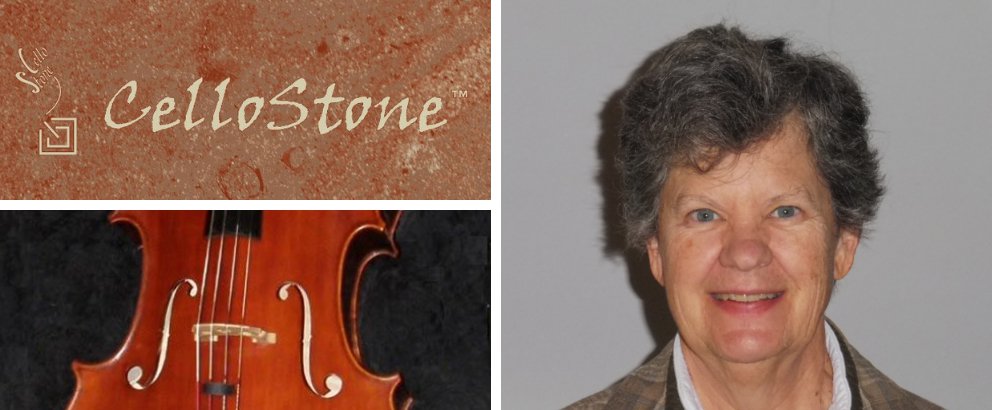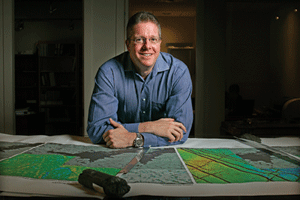Studying waves to contend with the wolf note

Beloved by musicians and music lovers alike, the cello is the most versatile of the string instruments, able to cascade from a high alto to a low bass in seconds. Of all the instruments, it is said to have a sound closest to that of the human voice, and it adds warmth, richness and complexity to many musical arrangements.
To create beautiful music, however, cellists must contend with the “wolf note.” This note, which got its name from the animal-like howl it creates, occurs when the cello emits two frequencies close together, resulting in interfering frequencies. The quality of craftsmanship, small damping devices and a special clamp can all help mitigate the wolf note. However, it is always present in the feel of the bow, and even the most experienced of cellists must work around it.
Deborah Miles ’77, however, has changed how musicians think about the wolf note—and made waves in the physics world—with her invention of the CelloStone, a square travertine tile designed to dissipate the problematic energy completely.
Miles first became interested in the cello—and the accompanying wolf note—when she sought out a luthier to make a quality instrument for her daughter, who had been practicing for years on a basic cello and was ready to play more seriously. The luthier attributed the lack in quality of sound to the plies (thin layers of wood veneer) in plywood instruments. Hearing this, Miles thought something was off. Based on her 30 years of experience working with seismic data, she knew if the sound was truly acoustic, then the plies shouldn’t matter.
Miles approached the problem from a geophysical perspective, comparing the plies to thin strata in bedding planes. “Compression energy doesn’t care one bit about thin beds, it just averages,” she said. “So saying that it’s acoustic energy in the cello makes no sense. The only logical energy, if plies really make a difference, is shear wave energy.”
Miles set out to test her theory. The wolf note was almost inaudible in the workshop where the cellos were made, but as soon as they were in the hands of the cellists, the wolf note was strong. Back in the workshop for repair, the wolf note would disappear again, frustrating both the luthier and the cellists. Miles suspected the concrete floor was dissipating the sound differently than in other floors. She asked the luthier to have his clients to play their instruments in a place with a concrete floor (like a garage), and sure enough, the wolf note would all but disappear.
Once it became apparent that the concrete did make a difference, Miles set out to find a stone to sit at the base of the instrument that could match the frequency of the wolf note but with a small enough surface area to be portable. After visiting several different tile stores and looking at the qualities of stone, she settled on travertine, a material with the appropriate shear velocity to dissipate the wolf energy.
Miles knew her invention was a success when an experienced cellist using the stone played outdoors during a thunderstorm—where the change in humidity would usually affect the wolf note—and didn’t have to adjust her instrument at all. To the musicians, the complete elimination of the wolf note was like magic.
The reaction from the physics community, however, has been less enthusiastic. “There’s a lot of indifference,” said Miles. “People who have been studying this forever are saying it can’t possibly be true.” The cello couldn’t possibly be making sound from shear waves.
But Miles doesn’t let that deter her, even when physicists question how she knows she’s working with shear wave energy. “The answer is that I can hear it, and I can see it in my data,” she said. “It doesn’t have to be a sound wave to make sound.” Amplitude spectrums show the stone does not remove frequencies, only the wolf.



